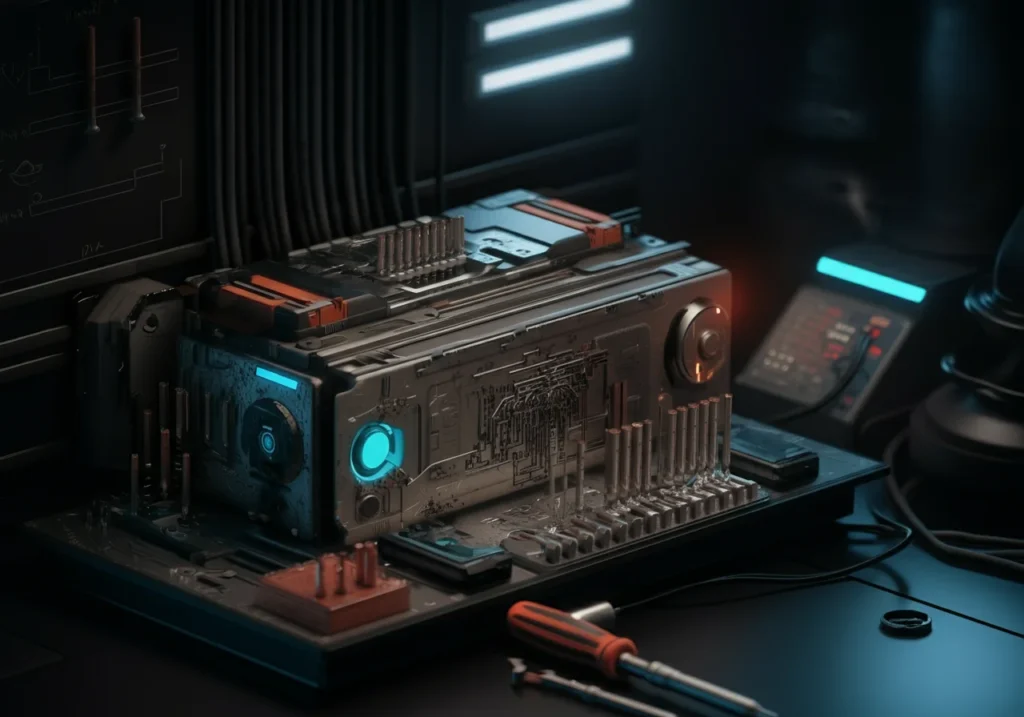Technical equipment failures can be frustrating, especially when you’re dealing with specialized models. How to fix okcfoz4.5l how ohilfoz4.5l built is a common search query from users experiencing issues with these particular units. Whether you’re a technician, equipment operator, or someone who relies on these systems for daily operations, understanding both the repair process and build specifications is essential for maintaining optimal performance.
This comprehensive guide will walk you through everything you need to know about troubleshooting, repairing, and understanding the construction of both OKCFOZ4.5L and OHILFOZ4.5L models. From identifying common problems to implementing effective solutions, you’ll gain the knowledge needed to handle these systems confidently.
Understanding the OKCFOZ4.5L and OHILFOZ4.5L
Before diving into repair procedures, it’s crucial to understand what makes these models unique. Both the OKCFOZ4.5L and OHILFOZ4.5L share similar foundational components but differ in their specific applications and build characteristics.
Core Components and Functions
The OKCFOZ4.5L typically features a multi-stage processing system with integrated control modules. Its primary components include:
- Primary processing unit with 4.5-liter capacity
- Control interface for monitoring and adjustments
- Safety mechanisms including automatic shutoffs
- Connection ports for external systems
The OHILFOZ4.5L, while similar in capacity, incorporates different internal configurations designed for alternative operational requirements. Its build includes:
- Enhanced filtration system
- Modified processing chamber design
- Upgraded sensor array for precise monitoring
- Reinforced housing for demanding environments
Common Issues and Symptoms
Both models can experience similar problems, though symptoms may manifest differently. Typical issues include:
Performance-related problems:
- Reduced processing efficiency
- Inconsistent output quality
- Unexpected system shutdowns
- Temperature regulation failures
Mechanical symptoms:
- Unusual noise during operation
- Vibration or instability
- Difficulty in startup procedures
- Connection problems with external systems
Control system malfunctions:
- Unresponsive interface panels
- Error code displays
- Calibration drift
- Communication failures
Step-by-Step Guide to Fixing Common Issues
Successful repairs require proper preparation and systematic troubleshooting. Here’s your comprehensive repair approach:
Tools and Materials Needed
Before starting any repair work, gather these essential items:
- Basic tools: Screwdrivers (Phillips and flathead), adjustable wrench set, pliers
- Diagnostic equipment: Multimeter, pressure gauge, temperature probe
- Safety gear: Safety glasses, work gloves, appropriate protective clothing
- Replacement parts: O-rings, gaskets, filters, and common wear components
- Cleaning supplies: Approved solvents, lint-free cloths, compressed air
Detailed Troubleshooting Instructions
Step 1: Initial Assessment
Start by conducting a visual inspection of both external and accessible internal components. Look for obvious signs of wear, damage, or contamination. Document any irregularities you observe.
Step 2: System Diagnostics
Run built-in diagnostic routines if available. Both models typically include self-test functions accessible through their control interfaces. Note any error codes or warning messages.
Step 3: Component Testing
Test individual components systematically:
- Verify power supply voltage and stability
- Check sensor readings against known standards
- Test control system responsiveness
- Examine mechanical components for proper operation
Step 4: Targeted Repairs
Based on your diagnostic findings, address specific issues:
For power-related problems, check all electrical connections, replace damaged wiring, and verify proper grounding.
For mechanical issues, lubricate moving parts, replace worn components, and realign any displaced elements.
For control system problems, update firmware if possible, recalibrate sensors, and reset system parameters to factory defaults.
Understanding the Build Process
Comprehending how these units are constructed helps inform better repair decisions and preventive maintenance strategies.
OKCFOZ4.5L Build Characteristics
The OKCFOZ4.5L follows a modular construction approach. Its assembly process emphasizes:
- Sequential component integration starting with the base processing unit
- Layered safety system implementation with redundant protective measures
- Standardized connection protocols for consistent interface compatibility
- Quality control checkpoints at each major assembly stage
OHILFOZ4.5L Construction Differences
The OHILFOZ4.5L incorporates several build variations:
- Enhanced structural reinforcement for increased durability
- Modified internal flow patterns optimizing processing efficiency
- Upgraded component materials providing better corrosion resistance
- Refined assembly techniques reducing potential failure points
Key Similarities and Differences
Both models share fundamental design principles but differ in implementation details. Understanding these distinctions helps predict likely failure modes and appropriate repair approaches.
Similarities include:
- Basic operational principles
- Standard maintenance requirements
- Common safety protocols
- Compatible diagnostic procedures
Key differences involve:
- Internal component arrangements
- Material specifications
- Performance optimization methods
- Specialized maintenance needs
Advanced Tips and Troubleshooting Techniques
Experience often reveals repair shortcuts and preventive measures that aren’t immediately obvious.
Professional Troubleshooting Approaches
Pattern Recognition: Document recurring issues to identify underlying causes rather than just treating symptoms.
Systematic Testing: Always verify repairs by testing related systems, not just the component you’ve fixed.
Environmental Considerations: Factor in operating conditions that might contribute to failures.
Preventive Maintenance Best Practices
Regular maintenance prevents many common problems:
- Scheduled inspections every 90 days for critical components
- Cleaning routines using manufacturer-approved methods and materials
- Component replacement based on operational hours rather than failure occurrence
- Documentation practices maintaining detailed service records
Performance optimization techniques:
- Monitor operating parameters continuously
- Adjust settings based on environmental conditions
- Update software and firmware regularly
- Train operators on proper usage procedures
Getting Your System Back to Peak Performance
Successfully repairing and understanding OKCFOZ4.5L and OHILFOZ4.5L systems requires patience, proper tools, and systematic approaches. The key lies in thorough diagnosis before attempting repairs and understanding how these units are built to inform better maintenance decisions.
Remember that complex technical systems benefit from professional expertise when problems exceed your skill level or available tools. Don’t hesitate to consult manufacturer documentation or seek qualified technical support when needed. Your investment in proper repair and maintenance procedures will ensure reliable long-term performance from both models.
Regular maintenance combined with prompt attention to developing issues will maximize your equipment’s operational life and minimize unexpected downtime. Keep detailed records of all service activities to help identify patterns and optimize your maintenance schedule.

